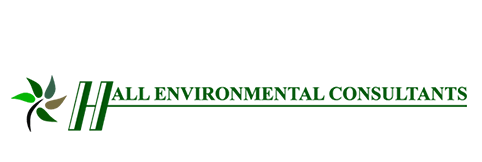3 Game-Changing Environmental Consulting Strategies Revealed
Environmental consulting has become increasingly vital for both companies and governments as they navigate complex sustainability challenges. Innovative strategies in environmental consulting are not only essential for compliance but also play a crucial role in achieving long-term sustainability goals. By adopting cutting-edge approaches, businesses can enhance their operational efficiency while minimizing their ecological footprint. These strategies comprise leveraging technology, improving stakeholder communication, and integrating sustainable practices across their projects. According to IBISWorld, the market size of the environmental consulting industry is expected to grow over the next five years. The market size of the environmental consulting industry is projected to grow in the coming years, signifying the growing importance of these strategies.
1. Emphasizing Data-Driven Decision-Making
1.1 Leveraging Big Data Analytics
Big data analytics offers unprecedented opportunities for environmental consulting firms to gain insights into complex ecological trends. By processing large datasets, firms can identify patterns that influence strategic direction, ultimately leading to more sustainable results. This data-driven approach enhances operational efficiency by providing a factual basis for decision-making processes. Moreover, leveraging big data allows firms to foresee potential environmental issues, preventing costly and impactful problems in the future. With the growing market size of environmental consulting, the ability to harness big data effectively sets firms apart in a competitive landscape.
1.2 Implementing Geographic Information Systems (GIS)
Geographic Information Systems (GIS) are pivotal tools in the realm of environmental consulting, particularly for site assessments and monitoring. GIS enables consultants to visualize spatial data, allowing for more informed decision-making in managing natural resources. The capability to map and analyze spatial data improves the accuracy of environmental impact assessments (EIAs). Companies using GIS are better equipped to evaluate site suitability, monitor changes over time, and efficiently manage ecosystems. As the need for sustainable practices grows, GIS will remain a critical component of environmental strategy.
1.3 Real-Time Monitoring and Sensor Technologies
The adoption of IoT devices for real-time environmental monitoring represents a revolutionary change in environmental consulting. Real-time data collection through sensors enhances the ability to track environmental variables such as air and water quality. This continuous monitoring allows for immediate responses to detrimental environmental changes, reducing long-term impact. By utilizing these technologies, firms can provide clients with actionable insights into their environmental performance. As the industry expands, firms that integrate advanced sensor technologies will maintain a competitive advantage.
1.4 Predictive Modeling for Future Outcomes
Predictive modeling is an essential tool for foreseeing potential environmental impacts and mitigating associated risks. Environmental consultants employ algorithms to simulate future scenarios and assess possible outcomes based on varied factors. This proactive approach aids in crafting strategic plans that anticipate changes and adapt accordingly. Predictive models inform clients about potential risks, allowing them to allocate resources effectively and avoid unforeseen setbacks. The market's growth underscores the need for predictive analytics in creating robust environmental strategies.
1.5 Data Visualization for Stakeholder Engagement
Data visualization plays a crucial role in enhancing stakeholder engagement within the environmental consulting sector. By converting complex datasets into intuitive and visually compelling formats, consultants can effectively communicate insights to diverse audiences. This visualization empowers stakeholders to make informed decisions about sustainability initiatives and strategies. Moreover, engaging visuals foster transparency and trust, which are essential in successful collaborations. As firms increasingly rely on data to drive decision-making, proficient data visualization becomes an indispensable skill.
2. Integrating Sustainable Practices Across Projects
2.1 Eco-Design and Life Cycle Thinking
The integration of eco-design and life cycle thinking is fundamental to minimizing the environmental impact of projects. Eco-design principles emphasize the development of products and services with diminished ecological footprints. By incorporating life cycle thinking, firms assess potential environmental impacts from conception through disposal. This comprehensive understanding ensures that every stage of a project is aligned with sustainability goals. Companies that prioritize eco-design are better positioned to meet the demands of environmentally conscious consumers and clients.
2.2 Sustainable Resource Management
Sustainable resource management is key to promoting environmental stewardship and operational efficiency. This approach involves the judicious use of resources to prevent depletion and ensure long-term availability. In environmental consulting, sustainable resource management strategies are employed to balance ecological health with business objectives. By optimizing resource use, firms can enhance project efficiency and reduce waste, contributing to broader sustainability efforts. Implementing sustainable practices also supports regulatory compliance, aiding firms in navigating increasingly stringent environmental laws.
2.3 Renewable Energy Implementation
Renewable energy implementation is a cornerstone of modern environmental consulting, reflecting a global shift toward sustainable energy sources. Projects that integrate renewable energy, such as solar and wind, align with environmental sustainability goals while reducing carbon footprints. By advocating for renewable energy solutions, consultants help clients achieve energy independence and financial savings. The adoption of renewable energy not only meets regulatory mandates but also boosts client reputation as environmentally responsible entities. As the industry evolves, renewable energy will remain a pivotal component of sustainable project planning.
2.4 Green Certifications and Standards
Achieving green certifications, such as LEED, validates and augments a firm's commitment to sustainability. These certifications serve as benchmarks for environmental performance, ensuring projects meet rigorous sustainability criteria. Earning such certifications enhances a company's reputation, setting it apart in a competitive market. Additionally, compliance with green standards can lead to financial incentives and regulatory advantages. As awareness of environmental issues grows, firms that prioritize certifications and standards will better capture opportunities in the expanding market.
2.5 Circular Economy Principles
Adopting circular economy principles is increasingly essential for reducing waste and conserving resources in environmental consulting. This approach emphasizes reusing, recycling, and repurposing materials to extend their lifecycle and minimize waste. Environmental consultants guide clients in implementing systems that embrace circular economy principles, promoting sustainable production and consumption. By fostering closed-loop systems, firms can achieve significant resource savings and diminish environmental impacts. The growth of the consulting industry underscores the importance of circular strategies in achieving sustainability targets.
3. Enhancing Stakeholder Collaboration and Communication
3.1 Facilitating Multi-Stakeholder Workshops
Facilitating workshops with diverse stakeholders is essential to fostering collaboration and achieving consensus in environmental projects. These workshops bring together participants with varying perspectives and expertise, enriching the decision-making process. By encouraging dialogue and shared understanding, consultants can align project objectives with stakeholder expectations. Effective workshops result in more robust strategies and enhanced stakeholder buy-in. As the complexity of environmental issues increases, facilitating collaboration becomes even more critical for project success.
3.2 Transparent Reporting and Sustainability Disclosures
Transparent reporting and sustainability disclosures are vital in building trust and accountability among stakeholders. Providing clear and comprehensive reports on environmental performance enables stakeholders to assess progress and identify areas for improvement. This transparency is crucial for maintaining strong stakeholder relationships and ensuring project success. Detailed disclosures also demonstrate an organization's commitment to ethical and sustainable practices. As market expectations for transparency increase, adept reporting becomes indispensable for gaining stakeholder confidence.
3.3 Utilizing Collaboration Platforms
Leveraging collaboration platforms enhances communication and efficiency among stakeholders involved in environmental projects. These platforms facilitate real-time information sharing, enabling swift decision-making and coordination. By consolidating communication in an accessible medium, stakeholders can easily track project progress and contribute to timely interventions. Moreover, digital platforms offer tools for document sharing and collaborative editing, streamlining project management. As technology continues to evolve, employing advanced collaboration tools will remain essential for effective stakeholder engagement.
The game-changing strategies revealed in this article highlight the transformative potential of innovative environmental consulting. By leveraging technology, integrating sustainability, and enhancing stakeholder collaboration, firms are poised to drive progress in sustainable development. These strategies not only enhance ecological outcomes but also contribute to business success, positioning consulting firms to thrive in an expanding market. As demand for sustainable solutions grows, embracing these strategies will be critical for achieving long-term environmental and economic goals. The future of environmental consulting lies in the creative application of these strategies to build a more sustainable and prosperous world. If you need professional environmental consulting, make sure to contact Hall Environmental Consultants today!




Share On: